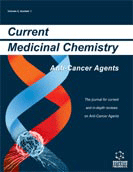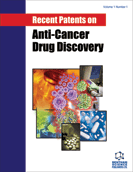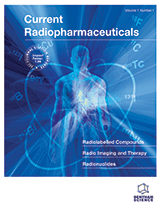Abstract
In addition to all-trans-retinoic acid and its 9 and 13-cis isomers, four synthetic retinoids are currently available to treat diseases of hyperproliferation, such as acne, psoriasis, and actinic keratosis, or cancers such as acute promelocytic leukemia, cutaneous T-cell lymphoma, and squamous or basal cell carcinoma. The retinoids extert their antiproliferative effects by interacting with their retinoic acid and retinoid X receptors that act as ligand-inducible transcription factors. These homologous receptors function either directly on retinoid response elements or indirectly by modifying the responses of other transcription factors. Their major domains for binding DNA and their ligands have been characterized by either nuclear magnetic resonance spectroscopy or X-ray crystallography. The identification and design of synthetic retinoids are overviewed, as are their selective interactions with specific retinoid receptor subtypes and their clinical effects against cancer. Emphasis is placed on the retinoid X receptors and their ligands.
Keywords: retinoid, retinoic acid, retinoid nuclear receptor, rar, rxr, anticancer activity, receptor-selective
Current Medicinal Chemistry - Anti-Cancer Agents
Title: Synthetic Retinoids and Their Nuclear Receptors
Volume: 4 Issue: 3
Author(s): M. I. Dawson
Affiliation:
Keywords: retinoid, retinoic acid, retinoid nuclear receptor, rar, rxr, anticancer activity, receptor-selective
Abstract: In addition to all-trans-retinoic acid and its 9 and 13-cis isomers, four synthetic retinoids are currently available to treat diseases of hyperproliferation, such as acne, psoriasis, and actinic keratosis, or cancers such as acute promelocytic leukemia, cutaneous T-cell lymphoma, and squamous or basal cell carcinoma. The retinoids extert their antiproliferative effects by interacting with their retinoic acid and retinoid X receptors that act as ligand-inducible transcription factors. These homologous receptors function either directly on retinoid response elements or indirectly by modifying the responses of other transcription factors. Their major domains for binding DNA and their ligands have been characterized by either nuclear magnetic resonance spectroscopy or X-ray crystallography. The identification and design of synthetic retinoids are overviewed, as are their selective interactions with specific retinoid receptor subtypes and their clinical effects against cancer. Emphasis is placed on the retinoid X receptors and their ligands.
Export Options
About this article
Cite this article as:
Dawson I. M., Synthetic Retinoids and Their Nuclear Receptors, Current Medicinal Chemistry - Anti-Cancer Agents 2004; 4 (3) . https://dx.doi.org/10.2174/1568011043352975
| DOI https://dx.doi.org/10.2174/1568011043352975 |
Print ISSN 1568-0118 |
| Publisher Name Bentham Science Publisher |
Online ISSN 1875-5968 |
 3
3Related Articles
-
Light Directed Gene Transfer by Photochemical Internalisation
Current Gene Therapy The Urokinase-type Plasminogen Activator and the Generation of Inhibitors of Urokinase Activity and Signaling
Current Pharmaceutical Design Galectin-9 in Cancer Therapy
Recent Patents on Endocrine, Metabolic & Immune Drug Discovery (Discontinued) An Epigenetic Approach to Pancreatic Cancer Treatment: The Prospective Role of Histone Deacetylase Inhibitors
Current Cancer Drug Targets Synthesis of [DTPA-bis(D-ser)] Chelate (DBDSC): An Approach for the Design of SPECT Radiopharmaceuticals Based on Technetium
Current Radiopharmaceuticals Gynaecological Cancer Diagnostics: 99mTc-Cisplatin Complex as a Future Approach for Early, Prompt and Efficient Diagnosis of Gynaecological Cancer
Current Medical Imaging Conditionally Replicating Adenoviruses for Cancer Treatment
Current Cancer Drug Targets α7 nAChR in Airway Respiratory Epithelial Cells
Current Drug Targets ABC Transporters and Drug Resistance in Patients with Epilepsy
Current Pharmaceutical Design The Role of Cellular Plasticity in Cancer Development
Current Medicinal Chemistry Targeting Cancer Stem Cells: Promises and Challenges
Anti-Cancer Agents in Medicinal Chemistry Anti-metastatic Treatment in Colorectal Cancer: Targeting Signaling Pathways
Current Pharmaceutical Design An Overview of Notch Signaling in Adult Tissue Renewal and Maintenance
Current Alzheimer Research CYLD-Mediated Signaling and Diseases
Current Drug Targets Human ABC Transporters at blood-CNS Interfaces as Determinants of CNS Drug Penetration
Current Pharmaceutical Design Hypoxia-Inducible Factors and Sphingosine 1-Phosphate Signaling
Anti-Cancer Agents in Medicinal Chemistry Anti-Inflammatory Treatments for Chronic Diseases: A Review
Inflammation & Allergy - Drug Targets (Discontinued) Increased Expression of Matrix Metalloproteinases Mediates Thromboxane A2-Induced Invasion in Lung Cancer Cells
Current Cancer Drug Targets The Modulation of Pain by Metabotropic Glutamate Receptors 7 and 8 in the Dorsal Striatum
Current Neuropharmacology Multimodality Imaging of CXCR4 in Cancer: Current Status towards Clinical Translation
Current Molecular Medicine


















